Thread subject: Diptera.info :: Chloropidae USA 2010-VI-22 (= Chlorops)
Posted by John Carr on 21-12-2011 01:18
#1
Massachusetts, USA June 22, 2010. 3.1 mm long.
Chlorops?
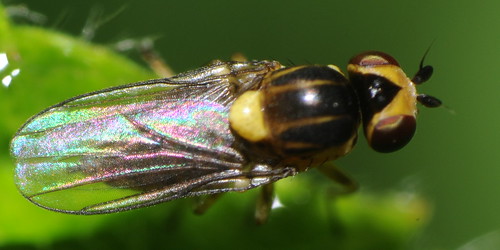
(Click image for large size, or view
on Flickr.)
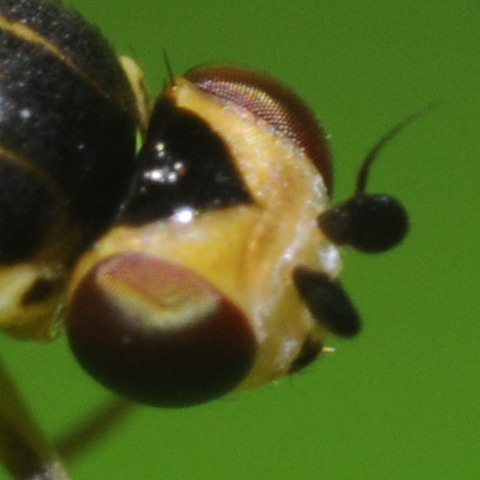

(Click image for larger size.)
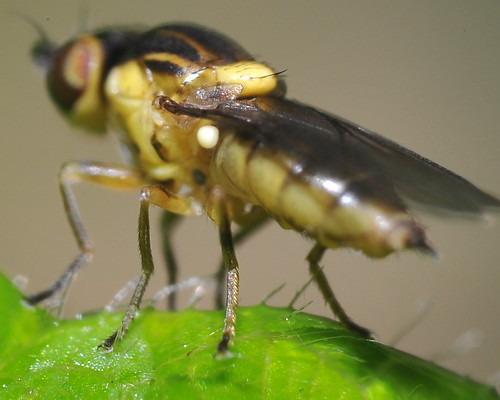
(Click image for larger size.)
Edited by John Carr on 08-01-2012 14:45
Posted by Sara21392 on 21-12-2011 13:04
#2
According your third picture, I see one row of setulae on the lateral margin of ocellar triangle; so, I think is
Chloropsina sp.! :)
EDIT: Just please check your species with fauna of USA, I don't know about there! :)
Edited by Sara21392 on 21-12-2011 14:23
Posted by John Carr on 21-12-2011 20:03
#3
Chloropsina did not exist in North America when the Manual of Nearctic Diptera was published. I see that there is a recent revision:
Nartshuk E.P. 2000: Holarctic grassflies of the genus Chloropsina Becker (Diptera, Chloropidae) with description of a new species. Entomologicheskoe Obozrenie 79: 254-261
I do not have a copy.
How does it differ from
Chlorops? Is there any other genus with which it might be confused?
The last revision of
Chorops as of 1983 was Becker (1912).
Posted by Sara21392 on 21-12-2011 23:34
#4
In fact in my opinion that's looks like to Chlorops, but In the third pic, I can see a row of setulae on the lateral margin of ocellar triangle that this makes me doubtful, if I didn't see this character, might I would arrive to Chlorops genus.
- Ocellar triangle with 1 or more rows of setulae on lateral margins.
- Ocellar triangle without setulae on lateral margins.
If you can confirm this character doesn't exist, I think, we will arrive to Chlorops.
Would you please check this? (Just look at base of those setulae that are they from inner margin of lateral triangle or outer, thank you)
I will check that reference, if I have, will give you a copy! :)
Posted by John Carr on 22-12-2011 01:13
#5
The raised ocellar triangle includes a narrow, yellow border. The yellow border has six or seven setulae on each side.
The third picture gets larger if you click on it.
Posted by Sara21392 on 23-12-2011 01:29
#6
Look at these pics, please. The setulae have to be like them, so, I think this is
Chlorops sp., now. :)
EDIT: I wanted to show you 2 pics about this subject, but unfortunately have problem about size, I will send them tomorrow, I hope. :|
Edited by Sara21392 on 23-12-2011 01:32
Posted by Alexandru Pintilioaie on 23-12-2011 18:44
#7
I put these 2 pictures here because seems Sara can't do this...:)
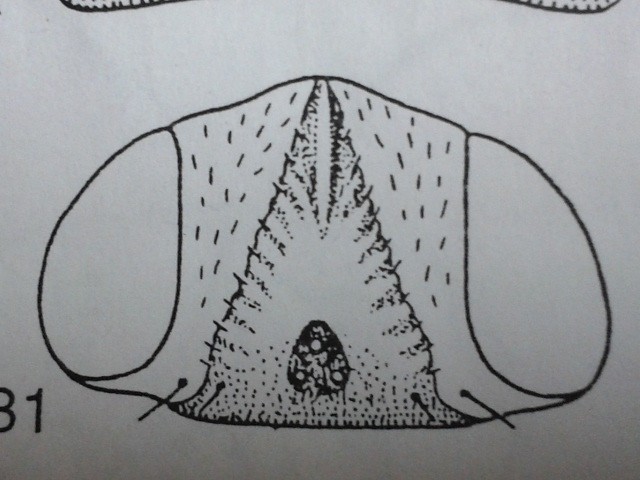
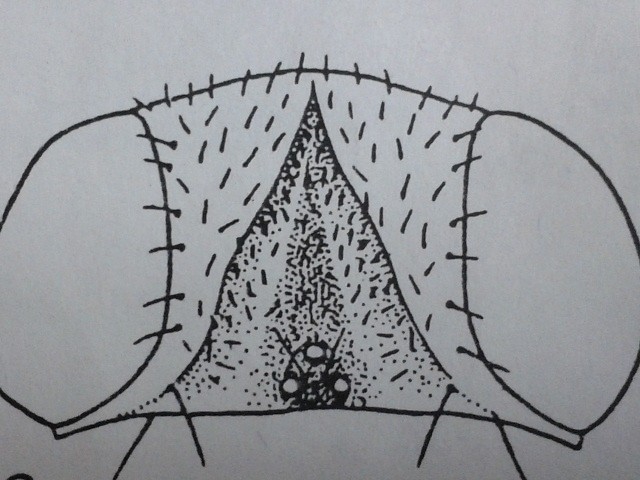
Posted by Sara21392 on 23-12-2011 18:51
#8
Thank you very very much Alexandru! :D :D
Posted by Alexandru Pintilioaie on 23-12-2011 18:57
#9
You are welcome Sara :D ;)
Posted by John Carr on 23-12-2011 23:03
#10
My fly has setae similar to the first drawing, one row along the outer edge of the triangle. Are both drawings
Chloropsina?
Posted by Sara21392 on 24-12-2011 00:11
#11
At first be careful about area of setulae, you told me:
"The raised ocellar triangle includes a narrow, yellow border. The yellow border has six or seven setulae on each side."
So, seems it shows those are in outer margin of ocellar triangle, Please look at your sample more carefully, setulae are like the first one pic that I showed you? (They are related to Thaumatomyia sp.) In first pic, the setulae are inner margin of triangle and also if you see, setula are all over margin of, not just six or seven setulae!!!!
Anyway, I wrote for you other characters in the key for arriving to Chloropsina genus! :)
- Ocellar triangle with 1 or more rows of setulae on lateral margins.
*
- Ocellar triangle without setulae on lateral margins.
- Scutum yellow with more or less developed black or red stripes; rarely entirely dark, then with scutellum flattened and apical scutellar setae approximated.
*
- Scutum entirely black.
- Scutellum flattened and with approximated apical setae.
- Scutellum not flattened, apical setae not approximated.
Chloropsina
Please tell me your reason! :)
Posted by John Carr on 24-12-2011 00:50
#12
I agree with the key choices you indicated. My fly has "Ocellar triangle with 1 or more rows of setulae on lateral margins" but I think both drawings show that character, or if only one does the first does more than the second.
Posted by Sara21392 on 24-12-2011 11:17
#13
I know an expert of Chloropidae in Canada, his name is Terry Wheeler. He knows about fauna of USA very well, I think is better you show him your sample too, for confirmation and sure! :)
If you did, please tell me about result, I'll be many thanks to you! :)
His address mail: terry.wheeler@mcgill.ca
Good luck
Posted by John Carr on 08-01-2012 14:44
#14
Terry Wheeler thinks
Chlorops, with the caveat that generic limits are unclear. There are undescribed species in America that do not fit neatly into European genera.
Posted by Sara21392 on 08-01-2012 15:30
#15
Thank you very much my friend! :) :)





